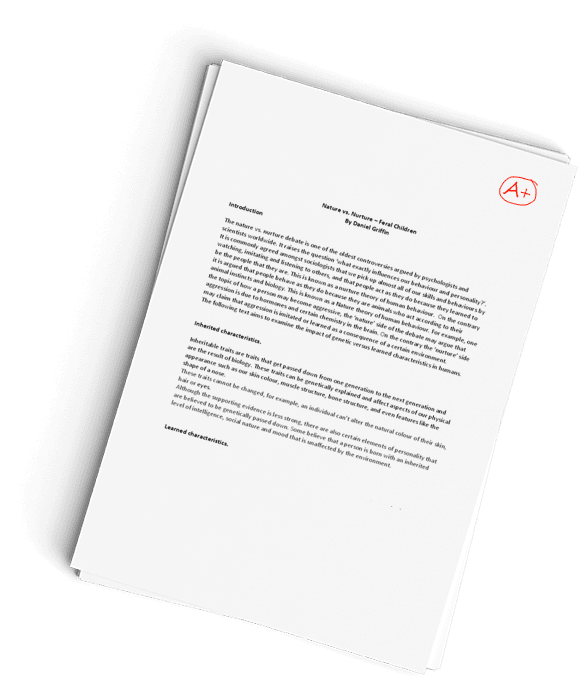NURS 4220 WU Wk 2 The Healthcare Effectiveness Data & Information Set Discussion
Question Description
Allison Wright
RE: Discussion – Week 2
Main Post
The Healthcare Effectiveness Data and Information Set (HEDIS) is a measurement tool used to evaluate a comprehensive range of health and service concerns. To be accredited by the national Committee for Quality Assurance (NCQA), health care plans must participate in HEDIS and its measurement projects (Comprehensive Diabetes Care – Ncqa, 2020). This applies to government funded plans such as Medicare and Medicaid (Spath, 2018).
One of the HEDIS measurement projects is Comprehensive Diabetic Care. Patients 18-75 who have a diagnosis of diabetes require measurements in the following areas: hemoglobin A1c (HbA1c) testing, HbA1c poor control (>9.0%), HbA1c control (<8.0%), HbA1c control (<7.0%) for a selected population, eye exam (retinal) performed, medical attention for nephropathy, and BP control (<140/90 mm Hg) (Comprehensive Diabetes Care – Ncqa, 2020). Management of blood glucose reduces the risk of serious medical complications and increased healthcare costs (CDC, 2020).
As the staff nurse, I would begin by creating a dashboard of the required quality measurements needed to meet HEDIS standards. I would then retrieve information from the EHR on patients with a diabetes diagnosis. Since information goes back one year, this would likely capture current patients being seen by the two physicians. I would simultaneously assign the office staff the task of providing a list of all patients billed in the last year to match to those with an electronic record. The medical assistant could be assigned to manually gather charts of billed patients that were not filed in the EHR, sort by diagnosis/history and input that data to complete the population of diabetic patients needed for project compliance. A run chart or bar chart could then be developed to visually display the gaps in data and/or the opportunities for improvement in the care provided to the patients with diabetes. A process improvement plan could then encompass the requirements needed to meet HEDIS and ultimately, NCQA accreditation. Keeping the dashboard updated with a quarterly review will keep the practice in alignment with the standards set nationally(Comprehensive Diabetes Care – Ncqa, 2020). Most importantly, this practice needs to convert 100% of the paper charts to the EHR. Technology must be utilized for cost effective management to take place. As stated in our reading, “Those working in healthcare today are challenged more than ever before to quickly and efficiently learn from data to improve their services and delivery of care (Perla, Provost, and Murray, 2011).”
References
CDC. (2020). National diabetes statistics report 2020. estimates of diabetes and its burden in the united states. [PDF]. Centers for Disease Control and Prevention. https://www.cdc.gov/diabetes/pdfs/data/statistics/national-diabetes-statistics-report.pdf
Comprehensive diabetes care – ncqa. (2020). The National Committee for Quality Assurance. https://www.ncqa.org/hedis/measures/comprehensive-diabetes-care/
Perla, R. J., Provost, L. P., & Murray, S. K. (2011). The run chart: A simple analytical tool for learning from variation in healthcare processes. BMJ Quality & Safety, 20(1), 46–51. https://doi.org/10.1136/bmjqs.2009.037895
Spath, P. (2018). Introduction to healthcare quality management, third edition. Health Administration Press.
Paula Miller
RE: Discussion – Week 2
High-quality data describes real-world health conditions and leads to better decision making. The Healthcare Effectiveness Data and Information Set (HEDIS) measures health and customer service issues. The health care industry uses this information to evaluate the dimensions of care and services for quality management purposes (Spath, 2018). HEDIS measures comprehensive diabetes care, including hemoglobin A1C testing and maintenance, retinal eye exams, blood pressure control, and kidney injury prevention and management (National Committee for Quality Assurance [NCQA], 2020).
In this scenario, the physicians are enquiring about quality incentives regarding patients with diabetes. As the staff nurse, I would first review the electronic health records (EHR) and manual charts of all 1000 patients to determine how many patients have been diagnosed with diabetes and how many patients meet the components in diabetic care HEDIS. The patient’s history within the billing department and the patients prescribed diabetic medication will also help me determine which patients have a diabetes diagnosis within the practice. It is crucial to ensure the data is accurate, self-explanatory, with clear and concise labels (Spath, 2019).
The data can then be compiled into an excel worksheet with diagrams comparing the patients who met the HEDIS requirements and those who did not. The comparison would determine if there was a need for quality improvement compared to last year’s services. A run chart is useful because data is collected over time, and the line graph determines trends and patterns (Perla et al., 2011). The comparison would include HEDIS measures for comprehensive diabetes care. Multiple levels of assessment are required to meet complete diabetes management guidelines. Furthermore, the combined data provides an opportunity for healthcare staff to take an active role in educating and empowering those who live with the disease while improving the overall patient experience. Maintaining up to date- records and visual graphs will ensure quality management care within the practice.
References
National Committee for Quality Assurance. (2020). Comprehensive diabetes care (CDC) [HEDIS measures]. https://www.ncqa.org/hedis/measures/comprehensive-diabetes-care/
Perla, R.J., Provost, L. P., & Murray, S. K. (2011). The run chart: A simple analytical tool for learning from variation in healthcare processes. BMJ Quality and Safety, 20 (1), 46-51. https://doi.org/10.1136/bmjqs.2009.037895.
Spath, P. 92018). Introduction to healthcare quality management (3rd.) Chicago, IL: Health Administration Press.
PRACTICE EXPERIENCE HERE
April Tomberlin
RE: Week 2 Rubric Reminder 🙂
According to the Institute for Safe Medication Practices, Centers for Disease Control and Prevention, and Federal Drug Administration (2020), vaccine and medication error identification and reporting are vital to share potential or actual errors to support process reviews and changes to support a culture of safety. In this week’s review of the current corporate reporting process, two methods of reporting are in use.
The first method is the use of an electronic based event reporting system. In talking with organizational leaders, the identified gaps/barriers that require self-reporting have been a timely process. To help improve reporting, leaders have streamlined required data fields to support timely reporting. Another barrier to this type of reporting is the fear of punitive response or loss of a job. To mitigate this fear, the leaders have provided education and training on “First Do No Harm,” emphasizing a just and safe culture for reporting and even allowing reporting anonymously.
The second type of reporting is by barcode scanning reports. The process for pulling the electronic record information requires that the operational leaders run a monthly report and share it with their team. The concern with this is that the leaders must take time to run the report, share the data, and support processes to ensure 95% compliance with the barcode scanner. A monthly dashboard is provided for transparency across the medical group in a red light/green light report to leaders.
In researching the current literature on medication/vaccine safety reporting, the ISMP, CDC, Department of Health and Human Services, Food and Drug Administration, and Agency for Healthcare Research and Quality all set forth standards and processes to support surveillance and mitigation of these types of safety events (ISMP, 2020; CDC, 2020; FDA, 2020; AHRQ, 2019; WHO, 2018). Data collection for medication safety events or near misses is often reported using an electronic reporting database through the national reporting system taxonomy (Teal et al., 2019). Vaccine errors and adverse reactions are captured using the Vaccine Event Reporting System (VAERS), a national early warning system to detect possible safety problems with tracking of trends and potential concerns across the nation (VAERS, 2020). This requires self-reporting of the team to capture the issue and feel safe reporting.
Nurses spend the most time with patients, a large portion of their time is spent preparing medications/vaccines, validating correct patient, medication, dose, route. Nurses and nursing students are key stakeholder that can provide valuable insight, identify process breakdowns, and help with implementation of evidence-based practices (Teal et al., 2019). Nurses advocate for safe care of patients daily with the top priority to provide safe and quality care for improved outcomes for their patients.
References:
Agency for Healthcare Research and Quality (AHRQ), September 7 2019, Retrieved from https://psnet.ahrq.gov/primer/medication-errors-and-adverse-drug-events
Center for Disease Control and Prevention, September 14, 2020, Retrieved from https://www.cdc.gov/vaccinesafety/hcproviders/reportingadverseevents.html
Institute for Safe Medication Practices, 2020, Retrieved from https://www.ismp.org/report-medication-error.
Patient safety – data and statistics. World Health Organization. 2018. http://www.euro.who.int/en/health-topics/Health-sy… data-and-statistics. Accessed November 7, 2018. 2. Aronson JK. Medication errors: definitions and, 2020; CDC, 2020)
Teal, T., Emory, J., & Patton, S. (2019). Analysis of Medication Errors and near Misses Made by Nursing Students. International Journal of Nursing Education Scholarship, 16(1). https://doi-org.ezp.waldenulibrary.org/10.1515/ijnes-2019-0057
Vaccine Event Reporting System (VAERS), 2020. Retrieved from: https://vaers.hhs.gov/resources/infoproviders.html
Hellen Kendrick
RE: Group B Practice Experience Discussion – Week 2
Preventing falls is a quality improvement process that my organization strives to improve daily. I discuss my organizational fall measures with our Safety Officer and a member of the Fall Champion Team. The Fall Committee team is one of my organization’s steps to decrease our current fall rate. Although we have improved over the last 5years, there is still room for improvement. The data shared by the organization was specific but not sharable with outside sources due to privacy reasons. My organization has a “need to know the policy,” which means only the person caring for that patient is allowed to enter that patients chart; therefore, patient charts were not accessible to collect data. The Fall review report for FY20 was provided for the organization FY19 fall data review. This report alone was detailed data on organization falls, and there were no gaps in the data.
We discussed the organization’s fall measures, such as risk assessment tools. ( Morse Fall Scale, Wilson Sim Fall Assessment, and Get Up and Go). Fall risk assessments are done upon admission, each shift, and discharge. Also, fall risk wrist bands are worn; apple signs are placed on the door to alert staff of high-risk fall patients. Environmental rounds are done to access fall risk hazards. Consultation to Pharmacy for review of high fall risk medications are ordered. Nutrition consults are ordered for patients who have fallen in the last 30 days. Physical Therapy Consults are requested to access mobility, gait training, and exercises. Other areas discussed were the proper used of assistance devices and flagging charts of high fall risk patients. Even with all of these measures, falls are still happening.
A 2012 Cochrane Systematic Review reported that clinical assessment by a health care provider combined with individualized treatment of identified risk factors, referral if needed, and follow-up reduced the rate of falls by 24%. Similarly, the U.S. Preventive Services Task Force found that multifactorial clinical assessment and management, combined with follow-up, was effective in reducing falls (Phelan et al.,2015)
Falls during a hospital stay are common. Across 1,200 hospitals in the United States, adults in medical and surgical units fall 3.56 times per 1,000 patient days, with 26.1% of falls resulting in patient injuries, such as lacerations, fractures, intracranial bleeding, and death. Compared to patients without falls, patients with fall-induced severe injuries stay 6.9 days longer and have hospitalization costs that are $13,806 higher (2009 dollars). The costs of falls are often absorbed by the hospital, particularly for patients insured under Medicare. (Walsh et al.,2018)
In a study called Comparisons of Interventions for Preventing Falls in Older Adults, it talked about how falls are a substantial burden for patients and the health care system. Falls in the elderly population is increasing. The goal of this study was to assess the effectiveness of interventions. Data from the National Institute on Aging showed that the 2-year prevalence of falls among individuals aged 65 years or older was 36% in 2010. In 2012, the cost of falls to Medicare was $31 billion. Falls not only can cause severe injury or death, but they could also cause anxiety and depression and reduced quality of life. The incidence of falls is expected to continue to rise with the aging of the population worldwide. That is was is so crucial to put in place measures and intervention to prevent falls in healthcare. (Batalden, September 2018)
The majority of falls result from a combination of factors, and a wide range of falls prevention methods have been reported. Accurate fall risk assessment is essential. Some hospital falls prevention interventions include intervention such as patient education, modification of the environment, and clinician training. Hospital systems, policies, and procedures for preventing falls can also influence the outcome by optimizing organizational practices. (Slade et al. 2017)
There are many fall prevention interventions developed for the hospital and clinic setting. Interventions as educating patients or staff, putting signs at the bedside or wristbands on high-risk patients, providing socks with treads, reviewing events that precede falls, scheduling toileting, reviewing medications, installing bed alarms, and checking bedrails, among others. (Walsh et al., 2018)
Falls are preventable with risk assessment and exercise. Exercise has been shown to reduce the incidence of falls by 13% to 40%, which has led to a broad consensus among experts that community‐dwelling older adults, especially those at risk of falling, should be offered exercises that incorporate elements of balance, gait, and strength training. Organizations including the American Geriatrics Society and British Geriatrics Society, Academy of Geriatric Physical Therapy of the American Physical Therapy Association, National Institute for Health and Care Excellence, U.S. Preventive Services Task Force, and National Council on Aging have issued guidelines, recommendations, and action plans to assist practitioners working with those at risk for falls. (Li et al., 2017)
Fall prevention measures must be individualized for each patient. These interventions must be included in the care plan. A successful program must consist of environmental measures such as nonslip floors or ensuring patients are within the nurses’ line of sight. Clinical interventions, such as minimizing deliriogenic medications; care process interventions using a standardized risk assessment tool; cultural interventions emphasize that fall prevention is a multidisciplinary responsibility. Technological/logistical interventions such as bed alarms or lowering the bed height. The program should explicitly tackle the underlying assumption held by many health care providers that fall are inevitable and not necessarily preventable.
Batalden, P. (2018, September 6). Getting more health from healthcare: Quality improvement must acknowledge patient coproduction—an essay by Paul Batalden. Retrieved October 14, 2020, from https://www.ncbi.nlm.nih.gov/pmc/articles/PMC61204…
Li, F., Eckstrom, E., Harmer, P., Fitzgerald, K., Voit, J., & Cameron, K. (2016, February). Exercise and Fall Prevention: Narrowing the Research-to-Practice Gap and Enhancing Integration of Clinical and Community Practice. Retrieved October 22, 2020, from https://www.ncbi.nlm.nih.gov/pmc/articles/PMC47608…
Phelan, E., Mahoney, J., Voit, J., & Stevens, J. (2015, March). Assessment and management of fall risk in primary care settings. Retrieved October 22, 2020, from https://www.ncbi.nlm.nih.gov/pmc/articles/PMC4707663/
Ranji, S. (n.d.). Falls. Retrieved October 22, 2020, from https://psnet.ahrq.gov/primer/falls
Slade, S., Carey, D., Hill, A., & Morris, M. (2017, November 12). Effects of fall prevention interventions on fall outcomes for hospitalized adults: Protocol for a systematic review with meta-analysis. Retrieved October 22, 2020, from https://www.ncbi.nlm.nih.gov/pmc/articles/PMC56955…
Walsh, C., Liang, L., Grogan, T., Coles, C., McNair, N., & Nuckols, T. (2018, February). Temporal Trends in Fall Rates with the Implementation of a Multifaceted Fall Prevention Program: Persistence Pays Off. Retrieved October 22, 2020, from https://www.ncbi.nlm.nih.gov/pmc/articles/PMC6736680/
Have a similar assignment? "Place an order for your assignment and have exceptional work written by our team of experts, guaranteeing you A results."








